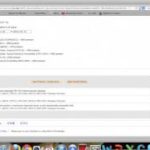Ad fraud in PPC and what you need to do to safeguard against it
 From http://www.prodo.com
From http://www.prodo.com
A quarter of all digital ad spend last year was spent fraudulently and this raised a few questions from everyone involved in PPC. There’s been a huge rise in fraudulent activity from an ads perspective. Google shut down twice as many fraudulent ads last year as it did in 2015.
There are a few things you can do to protect yourself, though – here are some recommendations, from setting SMART goals to making sure you’re measuring the right kind of activity on PPC campaigns.
Transcription
Hey guys, I want to talk today quickly about PPC click fraud just to address some of the issues that have come up, certainly with reports that have come up from last year. Talk about a few ways so you can safeguard yourselves make sure you’re getting the best ROI on your paid media. Just to get everyone to speed on this, the Drum found that a quarter of all ad spend last year was spent fraudulently. So that involved clicks from bot, false reports. This raised quite a few questions from publishers, from advertisers – from everyone involved from everyone in PPC.
Google reported that it shut down twice as many fraudulent ads as it did in 2016 as it did the year before.
One of the biggest bots that was shut down was Methbot; this was faking video views and interactions and was reported to be 3 and 5 millions dollars in revenue. The interesting thing: it wasn’t any of the big ad networks that picked this up like Facebook or Google, it was a security firm, and it’s formidable to think that this went on for months undetected, putting people out of pocket with nothing to show for their advertising campaigns.
We’re asking what gives, why is no one picking this up? And in fairness people are coming forward to say that, yes, we do have a problem with reporting black box kind of environments who contain their own reporting and don’t really answer to any media authorities. And then also people who run CPM campaigns, they’re probably the people at risk from this kind of activity. Because an impression doesn’t really carry intrinsic value to your campaign, or that anyone has taken any valuable action.
So Facebook took a fair rap on the knuckles, they were caught over reporting their video metrics. They don’t have any third party media who actually look into their activity. So, advertisers, there are a couple of things you can do.
Set up SMART goals, make sure you’re measuring the right activity, don’t just look at clicks, don’t just look at impressions from CTR – look at the activity people took when they came to the website. Was there an extremely high bounce rate? Does the traffic look unnatural in terms of its behaviour, is it all coming from one location, what kind of devices and browsers are they using, is it an even distribution compared to your other channels, does that match up with the kind of behaviour that you see taking place across other channels?
The other suggestion I’d make is moving away from CPM. It’s a little bit redundant these days; there’s no real measurable benefit.
Say you reach 250,000 with the frequency of two, so you’ve reached half a million people, so what did it to for your bottom line apart from a load of people may or may not have seen your ad, of which a load may have been bots anyway?
Put better measures in place, safeguard yourself from this kind of activity. certainly don’t stop using PPC. It’s extremely valuable, it contributes an incredible amount to a lot of businesses in terms of quality traffic. People using Google search network, Bing search network – other search networks are available, of course – you’re likely to be able to clearly measure ROI and keep a much stricter eye on any fraudulent activity that may be taking place.
Cited source: http://www.thedrum.com/news/2017/02/12/quarter-all-digital-advertising-expenditure-goes-fraud-according-estimates
See more at:
Website: http://www.prodo.com
Blog: http://www.prodo.com/prodoblog
Twitter: https://twitter.com/prodo
Instagram: https://www.instagram.com/prododigital/


![Fortnite Hack – Fortnite Free V Bucks – PS4 / PC / Xbox One – Fortnite V Bucks Hack [WORKING]](https://ad-tech.today/wp-content/uploads/2018/07/JKS8g5-150x150.jpg)






